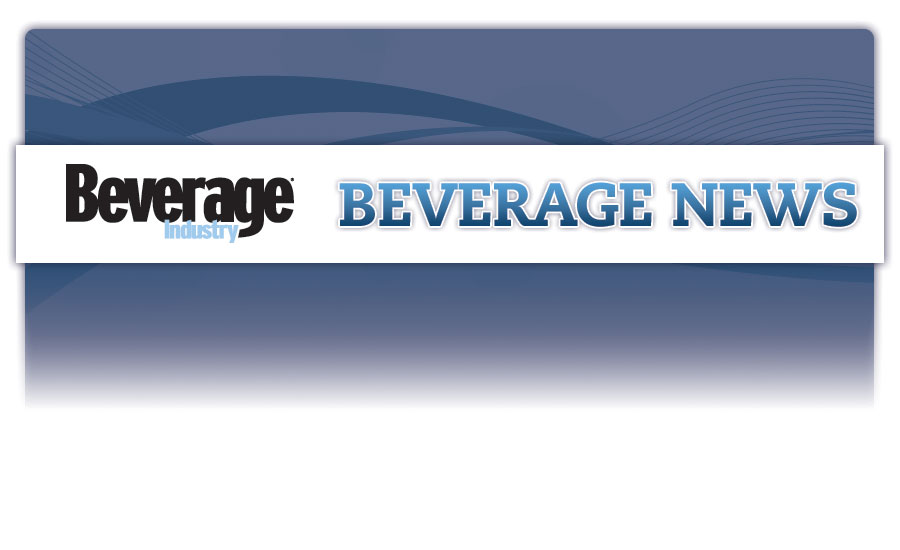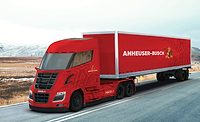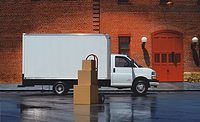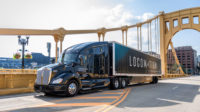Distribution
Beverage fleets future gets electrified
Alcohol, non-alcohol manufacturers invest in electric-powered trucks

Alternative fuels and green vehicles have taken many forms in the past dozen or so years, but unsurprisingly, the form that’s been dominating much of the public conversation has been electric — even though we are still many years away from any meaningful widespread deployment. It certainly helps the electric cause when there have been some pretty high-profile fleets with massive PR operations investing in the technology.
Anheuser-Busch InBev has been on the forefront of electric vehicle deployment within the beverage industry and over the past year, the company has expanded its commitment considerably.
Last fall, Anheuser-Busch (A-B), BYD (Build Your Dreams), the Center for Transportation and the Environment (CTE) and electric utility Engie Services U.S. revealed that A-B is deploying 21 BYD battery electric trucks in its California fleet as part of a state project to showcase economically and environmentally sustainable warehousing and distribution technology. As part of the project, Engie’s Southern California-based team is leading the design and installation of charging infrastructure at four A-B distribution facilities in the Golden State: Sylmar, Riverside, Pomona and Carson.
Additionally, Engie is installing and commissioning a 958.5-kilowatt solar array at the Carson location, designed to generate zero-emissions power to offset the use of conventional energy required in the charging process. The project is part of California Climate Investments, which puts billions of cap-and-trade dollars to work reducing greenhouse gas emissions, strengthening the economy, and improving public health and the environment. The initiative aims to reduce emissions by 910 metric tons of carbon dioxide (CO2) a year — or the equivalent of about 200 passenger vehicles’ worth of CO2 a year.
“At Anheuser-Busch, we are committed to leading our industry towards a more sustainable future by reducing our carbon emissions across our value chain by 25 percent by 2025,” said Angie Slaughter, vice president of sustainability procurement at Anheuser-Busch, in an October 2019 press release. “The transport industry is one that is prime for innovative solutions and we are excited to continue driving progress towards a zero-emission fleet through this partnership.”
The deployment, of course, follows on the heels of A-B’s 2018 announcement that it ordered 800 hydrogen-electric semi trucks from Nikola Motor Co.
It was a busy fall 2019 for A-B’s sustainable fleet initiatives. In November, the brewing giant, in partnership with Nikola and BYD, completed its first-ever “zero-emission beer delivery” in — where else — St. Louis. On the morning of Nov. 21, a Nikola hydrogen-electric vehicle picked up a load of beer and delivered it to Lohr Distributors. The wholesaler then delivered it to the local sports arena, the Enterprise Center, on a BYD electric truck. So, it was essentially a zero-emission delivery involving all three distribution tiers.
On the liquid refreshment side of the beverage business, Nestlé Waters North America (NWNA) also has been a leader in emissions reduction across its fleet. Earlier this year, NWNA’s ReadyRefresh consumer beverage delivery service earned carbon neutral certification under Natural Capital Partners’ CarbonNeutral global standard. In order to achieve this certification, NWNA had to follow the steps outlined by the Natural Capital Partners’ protocol: define the subject, measure its greenhouse gas emissions, set the target and reduce emissions. ReadyRefresh recently converted half of its beverage delivery trucks to propane and began adding electric vehicles to its last-mile fleet. It optimized routes through dynamic routing, which, the company says, cut 600,000 customer deliver miles in 2019.
Another tactic that has paid dividends on the sustainability front has been ReadyRefresh’s decision to ship water dispensers from the West Coast to the East Coast for cleaning and redeployment via train, rather than trucks. Additionally, all of the ReadyRefresh facilities in Texas, except for one, now use renewable energy covered by a power purchase agreement that helps reduce emissions annually by 397 tons.
On the supplier front, Kenworth, in January, announced a collaboration with Dana to develop a powertrain for Kenworth’s medium-duty battery electric vehicles. Kenworth unveiled the initial result of that collaboration, its K270E medium-duty delivery truck, at the CES tradeshow in Las Vegas. The cabover vehicle is equipped with a Dana-designed e-Powertrain system that’s fully upfitted to the Kenworth chassis. The truck uses a Spicer Electrified e-propulsion system, along with a standard Dana drive axle and drive shaft. It also features a Dana e-power system, which generates, stores and manages the energy for the vehicle.
The electric powertrain will be available with range options between 100 and 200 miles. The two included battery packs can be re-charged within about an hour, using the truck’s CD fast-charging system.
Meanwhile, Daimler Trucks announced last month that its E-Mobility Group is launching a worldwide initiative to establish charging infrastructures for electric delivery vehicles worldwide. The initial focus will be on installing charging stations at its fleet customers’ home bases. Daimler says that offering the stations on-site enables the company to tailor them to the specific needs of the end users. The eTruck Charging Inititiave, as Daimler calls it, combines the efforts of its eTruck customers, power grid operators, energy suppliers, charging hardware manufacturers and charging software providers.
Looking for a reprint of this article?
From high-res PDFs to custom plaques, order your copy today!





